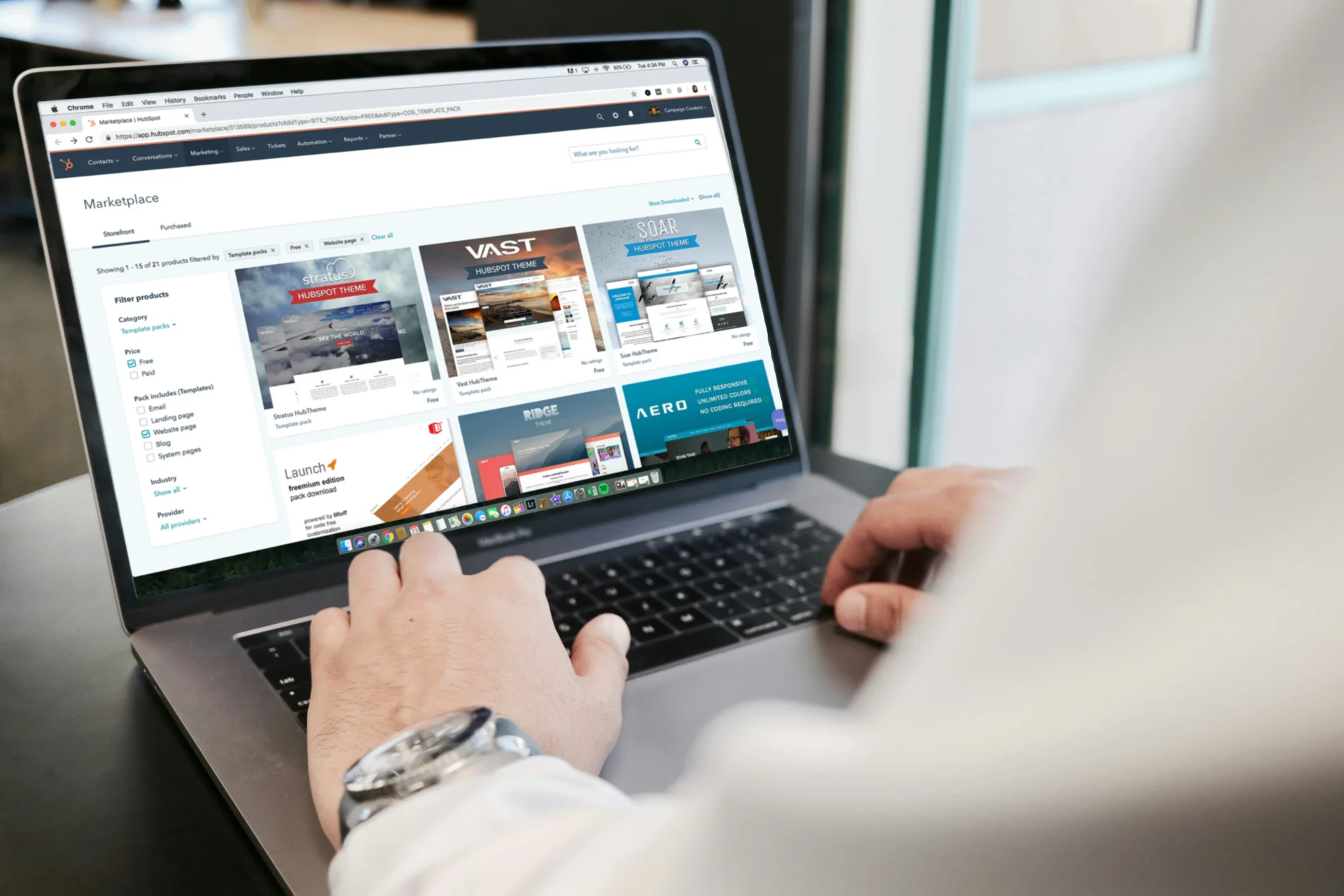Landing page optimization is an essential aspect of online marketing that can directly impact a business’s ability to convert visitors into customers. Whether you’re running ads, email campaigns, or organic traffic to your website, the effectiveness of your landing page can make or break your conversion rates. With a clear focus on driving specific actions, landing page optimization ensures that visitors have a seamless experience, making it easier for them to engage with your brand. This process isn’t about just creating attractive pages; it’s about designing strategic landing pages that push visitors to take the next step, whether that’s making a purchase or filling out a form.
The importance of landing page optimization can’t be overstated, especially as businesses face increasingly competitive digital landscapes. Optimizing these pages is more than a technical task—it’s about understanding user behavior, refining the elements that influence decision-making, and constantly testing to improve results. By improving everything from design to content and calls to action, businesses can ensure that their landing pages not only attract visitors but also inspire them to act.
Understanding the Core of Landing Page Optimization
Landing page optimization is the process of refining various elements on a landing page to maximize its effectiveness in achieving a specific goal, such as increasing conversion rates, generating leads, or driving sales. This is an ongoing process involving testing, analyzing, and tweaking elements to ensure the page performs at its best. By understanding user behavior and creating a seamless, persuasive experience, you can encourage visitors to take meaningful actions.
While landing page optimization and website optimization share the same goal of improving online performance, they differ in focus. Website optimization is broader, addressing site structure, navigation, and the overall user experience. In contrast, landing page optimization hones in on one specific page with a targeted objective. Think of your website as the store and your landing page as a focused display designed to sell a particular product or service.
A landing page also plays a vital role in SEO. It is specifically designed to capture traffic from targeted search queries and is optimized for relevant keywords to convert visitors who are actively searching for your offer. Effective landing page optimization is key to maximizing the ROI of your SEO efforts. Without it, even well-targeted traffic may fail to convert. Understanding your audience’s needs, motivations, and pain points is the foundation of successful landing page optimization.
Essential Elements of High-Converting Landing Pages
A high-converting landing page is more than just words and images—it’s a well-crafted experience aimed at persuading visitors to take action. The headline is one of the most important elements; it must instantly grab attention and communicate the value of your offer. A weak headline can cause visitors to leave before even engaging with the content, so it’s crucial to make that first impression count.
Persuasive copy is equally vital. It should clearly highlight the benefits of your offer, addressing potential objections while speaking directly to your target audience. Incorporating strong calls to action (CTAs) is essential to guide visitors toward the desired outcome. Your CTA should stand out visually and feature action-oriented language like “Get Started Now,” “Download Free Guide,” or “Sign Up Today,” encouraging immediate action and creating a sense of urgency.
The design of your landing page also plays a significant role in its success. A visually appealing, easy-to-navigate, and mobile-responsive layout is key to retaining visitors. A cluttered or confusing design can lead to high bounce rates, so it’s crucial to ensure that every element of the page is streamlined and effective in leading visitors toward conversion.
Proven Strategies for Landing Page Optimization
Let’s explore some proven digital strategies for optimizing your landing page. A/B testing is one of the most effective methods. It involves creating two versions of your landing page (A and B) and testing them against each other to identify which one performs better. By testing elements like headlines, copy, images, and CTAs, you can pinpoint what resonates most with your audience. The key to success with A/B testing is to test one element at a time for accurate results.
Personalization is another powerful strategy for boosting engagement. Tailoring the landing page experience based on user demographics, behavior, or past interactions makes the content feel more relevant and engaging. You might show different offers or adjust copy based on individual visitor data, which helps increase conversion rates. Additionally, social proof plays a crucial role in building trust. Including testimonials, reviews, and social media mentions shows that others have benefited from your offer, which encourages visitors to take action.
To optimize even further, use heatmaps and user recordings to understand user behavior. Heatmaps reveal where visitors are clicking, scrolling, and hovering, while user recordings allow you to observe actual user sessions. These insights help identify friction points or areas of confusion on your landing page. Also, user feedback and surveys provide direct input on what could be improved. Gathering this feedback helps you address pain points you may not have initially noticed, ensuring your landing page continues to evolve for better performance.
The Essential A/B Testing Process for Landing Pages
Let’s dive deeper into the importance of A/B testing for landing page optimization. To optimize effectively, it’s essential to answer two key questions: “Where should we improve?” and “How can we test those improvements?” The process begins with identifying areas for enhancement. You can analyze landing page performance using tools like heatmaps, user recordings, and user feedback. Once you’ve pinpointed the problem areas, the next step is testing those changes through A/B testing.
Setting up an A/B test requires a structured approach. First, define a clear hypothesis about what you aim to test and the expected outcome. Then, create two versions of your landing page, changing only one element at a time. Make sure to use the appropriate A/B testing tools to track performance, and decide which metrics will indicate success. While conversion rate is often the primary metric, you may also track bounce rate, time on page, and click-through rate to gauge effectiveness.
After running your A/B test for a sufficient period, the next step is data analysis. Review the results to determine which version of the page performed better. If the results are statistically significant, implement the winning version on your landing page. Landing page optimization is an ongoing process—keep testing, analyzing, and optimizing to achieve continual improvements and maximize conversion rates.
Measuring Success and Tools for Optimization
Measuring the success of your landing page optimization efforts is crucial for continuous improvement. Key metrics and KPIs, such as conversion rate, bounce rate, time on page, and cost per acquisition, offer valuable insights into how well your landing page is performing. Setting up accurate tracking and analytics is essential. Platforms like Google Analytics can help you monitor user behavior and landing page performance, allowing you to make data-driven decisions about your optimization strategy.
In addition to tracking metrics, there are a variety of tools that can help you optimize your landing page. A/B testing platforms like Optimizely and VWO allow you to test different versions of your landing page to determine which elements drive the best results. Tools like Hotjar and Crazy Egg provide heatmaps and user recordings to help you understand how users interact with your page. By combining these tools, you can gain deeper insights into user behavior, identify pain points, and refine your approach.
Ultimately, the goal of landing page optimization is to improve your conversion rate and achieve your marketing goals. Regular reporting and analysis of key metrics will help you spot trends and track your progress over time. By integrating the right tools with other marketing platforms like CRM and email marketing, you can enhance your optimization efforts and create a seamless, high-converting landing page experience.
Wrap Up
Crafting a high-converting landing page is far from just a technical endeavor – it’s a dynamic fusion of strategy and creativity. It’s about weaving together attention-grabbing headlines, compelling copy, and intuitive design into a seamless experience that speaks to your audience’s needs and prompts them to act. Every call-to-action becomes an invitation, and the layout gently guides visitors through a captivating journey. By leveraging powerful tactics like A/B testing and personalization, you can continuously fine-tune your page to stay in sync with your audience’s evolving expectations. When done right, your landing page doesn’t just capture attention—it becomes a highly effective conversion machine, transforming casual visitors into loyal customers.
If you’re ready to level up your landing page and unlock the full potential of your digital marketing strategy, fishbat is here to help. As a premier New York digital marketing agency, we specialize in creating and executing strategies that drive real results. Whether you need expert guidance on landing page optimization or a comprehensive social media strategy, our team is here to support you every step of the way. Contact us today at 855-347-4228 or hello@fishbat.com for a free consultation, and let’s turn your next landing page into a conversion powerhouse.


